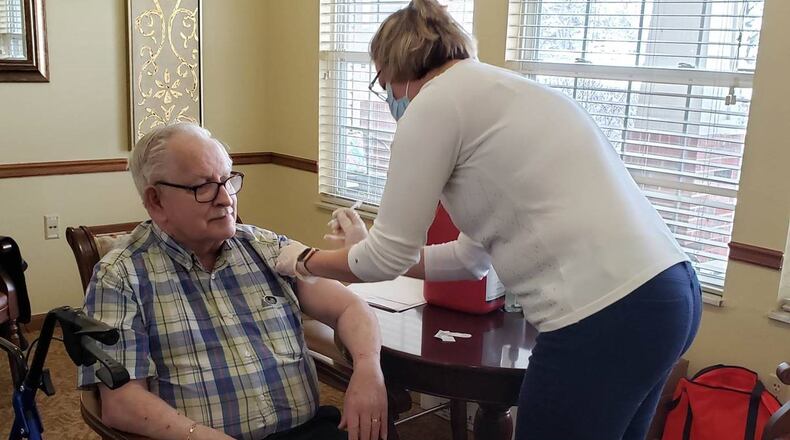Meanwhile restrictions on family visiting have also dragged on 11 months, also taking a devastating toll. Some people living with dementia forgot family they were cut off from. Some lost weight. Family hugs mostly didn’t happen. Staff shouldered the extra burden.
But now, there’s a signs of hope. Vaccines that overwhelmingly protect people from severe disease have been delivered. Last week, Ohio long-term care facilities reported 343 new cases - this is compared to the 2,832 new cases when case numbers peaked in December.
Speaking at a panel hosted by AARP Ohio, Robert Applebaum, director of the Ohio Long-Term Care Research Project with Miami University, said he thinks it is time to safely and carefully open up for visiting.
“Probably starting with having one family member be identified and making sure we have proper testing for those folks. But I think it’s time to start,” Applebaum said. “We have to do it carefully, because obviously the we still have COVID and we still have spread. But I think it’s time to really start expanding our ability to have families go in and see their loved ones.”
A panel convened to advise the federal government called for an “essential caregiver” program, which would let residents designate a family member to get expanded visiting access to see their loved one while still taking COVID-19 safety precautions, but that was not implemented in many states including Ohio. Federal and state regulators both have overlapping rules governing nursing homes and pandemic safety restrictions and neither have laid out a plan to relax and alter rules.
For visiting, federal regulations call for no new cases in last two weeks, no outbreak testing currently still happening, and a community positivity rate of less than 10%.
“We’re seeing positivity rates decrease. Soon, more nursing homes may be able to allow more visitation,” Gov. Mike DeWine said Monday at his afternoon press conference.
DeWine said he was sending a letter to each facility to remind them to check their county positivity rate every week to determine their visitation status.
In his letter, the governor also will remind facilities to allow for compassionate care visits.
The Dayton Daily News previously reported that compassionate care visits are allowances for visiting if a resident has an urgent need, as outlined by the Ohio Department of Health. This can include not just an end-of-life situation, but also includes situations like:
- A resident who is grieving after a friend or family member recently died.
- A resident who needs cueing and encouragement with eating or drinking, previously provided by family or caregiver, and is experiencing weight loss or dehydration.
- A resident, who used to talk and interact with others, is experiencing emotional distress, seldom speaking or crying more frequently when the resident had rarely cried in the past.
AARP Ohio detailed the state of nursing home care at a legislative briefing Monday.
The organization reported that nursing home resident deaths spiked in Ohio between October and December, up four-fold nationally and up seven-fold in Ohio.
Rates have come down in January, but still about 1 in 9 residents got infected and 1 in 35 died from COVID-19.
In the last month, 3 out of 5 nursing homes in Ohio had a resident test positive, AARP Ohio found. Seven out of 8 had a staff member test positive.
Over the course of the pandemic 96% of nursing homes had a resident test positive, over 6,400 nursing home residents in Ohio have died, and over 34,000 residents and 26,000 staff have tested positive. For scale, there are currently about 60,000 people living in Ohio nursing homes, though the people come in and out including for short term stays.
Get Ohio nursing home visiting questions answered
If you have questions about how compassionate care visits apply to you, call your individual facility for their procedures.
If you are not sure if the visiting rules are being applied correctly at your facility or your loved one’s facility, the Long-term Care Ombudsman program is staffed with free public advocates who can help you navigate the system. The Dayton-area ombudsman office serves Montgomery, Preble, Greene, Clark, Miami, Darke, Logan, Shelby and Champaign counties and can be contacted by calling 937-223-4613 or 1-800-395-8267 or online at dayton-ombudsman.org.
About the Author


